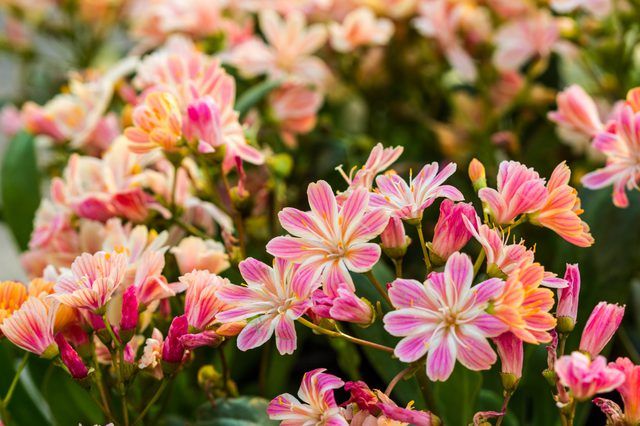Bulbs
Flower Basics
Flower Beds & Specialty Gardens
Flower Garden
Garden Furniture
Garden Gnomes
Garden Seeds
Garden Sheds
Garden Statues
Garden Tools & Supplies
Gardening Basics
Green & Organic
Groundcovers & Vines
Growing Annuals
Growing Basil
Growing Beans
Growing Berries
Growing Blueberries
Growing Cactus
Growing Corn
Growing Cotton
Growing Edibles
Growing Flowers
Growing Garlic
Growing Grapes
Growing Grass
Growing Herbs
Growing Jasmine
Growing Mint
Growing Mushrooms
Orchids
Growing Peanuts
Growing Perennials
Growing Plants
Growing Rosemary
Growing Roses
Growing Strawberries
Growing Sunflowers
Growing Thyme
Growing Tomatoes
Growing Tulips
Growing Vegetables
Herb Basics
Herb Garden
Indoor Growing
Landscaping Basics
Landscaping Patios
Landscaping Plants
Landscaping Shrubs
Landscaping Trees
Landscaping Walks & Pathways
Lawn Basics
Lawn Maintenance
Lawn Mowers
Lawn Ornaments
Lawn Planting
Lawn Tools
Outdoor Growing
Overall Landscape Planning
Pests, Weeds & Problems
Plant Basics
Rock Garden
Rose Garden
Shrubs
Soil
Specialty Gardens
Trees
Vegetable Garden
Yard Maintenance
Drought-Tolerant Perennials
To create a drought-resistant garden, choose plants adapted to survive climates where they don't receive much moisture or humidity.

Dry seasons, droughts and rising water costs, as well as the desire to conserve water, mean it's important to know which plants will thrive without being watered. For the best results, look for perennials with succulent leaves or those that come from dry climates, such as Mediterranean countries or the American prairies. All of them will require watering while they become established but should need less water after the first season. Keep in mind that most drought-tolerant plants prefer full sun, though some will tolerate partial shade.
Succulent Species
Succulents can store water in their juicy leaves, which generally feel somewhat spongy when pinched. Because these types of plants rot easily, mulch them with gravel rather than damper materials, like wood chips, to prevent sogginess around their root crowns.
Bitter roots (Lewisia spp.), which grow in U.S.
Department of Agriculture plant hardiness zones 4 through 10, depending on the species, are named for the deep roots which help them find water in unpromising places. They grow from 2 inches to 1 foot tall with clumps of leathery leaves and vividly colored 1- to 2-inch flowers in late spring or summer.
Stonecrops (Sedum spp., USDA 4 through 12) range from 1 inch to 3 feet tall with fleshy leaves and "galactic" clusters of diminutive, star-shaped, five-petaled blooms in spring, summer or fall.
Hens and chicks (Sempervivum spp., USDA zones 4 through 10), are actually rosettes of succulent leaves with inconspicuous summer flowers on the oldest "hens," make "chicks" (offshoots) around their perimeters to replace mother plants which die after they bloom.
Ice plants (Delosperma spp., USDA zones† 5 through 10) grow only 1/2 inch to 4 inches tall, with leaves like succulent needles, and flaunt 1 to 1 1/2-inch flowers in fluorescent colors during spring, summer or fall. Use ice plants as ground covers.
Euphorbias (Euphorbia spp., USDA zones 4 through 10) are extremely diverse and range from 1 to 30 feet tall, most producing only tiny blooms. Some look like cactuses while others look like shrubs or more traditional perennials.
Warning
The white sap that oozes from damaged euphorbias can be somewhat toxic and irritating to both your eyes and your skin. Try to avoid injuring the plants and wear gloves if you're working with them.
Mediterranean Marvels
Mediterranean plants tend to be strongly fragrant with narrow, silvery leaves that reflect the sun. Many donít require large amounts of water during the hottest months. They do need well-draining soil and more watering in winter.
Rosemaries (Rosmarinus officinalis, USDA zones 6 through 11) grow from 1 to 8 feet tall with pungent leaves† and 1/4- to 1/2-inch blue, pink or white flowers from fall through spring.
Thymes (Thymus spp., USDA zones† 3 through 11) range from 1/2 inch tall for creeping species to 1 1/2 feet for more upright varieties with small, aromatic leaves and equally tiny white, pink or mauve blooms in spring or summer.
Lavenders (Lavandula spp., USDA zones 5 through 11) grow from 6 inches to 4 feet tall with fragrant spikes of purple, pink or white flowers against gray-tinted foliage, usually in spring or summer.
Rockroses (Cistus spp., USDA zones† 7 through 10) stand 2 to 6 feet tall and bloom most heavily in spring and early summer with crepey pink, mauve or white blooms 1 to 4 inches in diameter.
Oleanders (Nerium oleander, USDA zones 9 through 11) reach heights from 3 to 20 feet with slender, leathery leaves and funnel-form flowers 2 to 3-inches across Ė in white, yellow, pink or red -- from late spring into fall.
Warning
Oleanders are extremely poisonous plants, so donít plant them where they may be a danger to children or pets.
Prairie Plants
Native prairie plants can survive and even thrive on minimal water. Mix some compost into the soil and mulch that soil to help retain what moisture there is.
Yarrows (Achillea spp., USDA zones† 3 through 10) range from 6 inches to 5 feet tall with ferny foliage and pancake-flat heads of small flowers from late spring through fall.
Coneflowers (Echinacea spp., USDA zones† 3 through 10) make clumps of rough-textured leaves and 1 1/2- to 4-foot stalks topped with 4-inch-diameter summer blooms featuring downward curving petals and upward facing central "cones."
Tickseeds (Coreopsis spp., USDA zones 3 through 11) range from 5 inches to 3 feet tall with a variety of foliage patterns -- including narrowly lobed and ferny -- and 1- to 4-inch flowers in an equally wide array of colors during summer.
Blanket flowers (Gaillardia spp., USDA zones 5 through 11) grow 1 1/2 to 4 feet tall with hairy and sometimes lobed leaves and 2- to 4-inch summer blooms in bright yellows or reds.
Lantanas (Lantana spp., USDA zones 9 through 12) reach 1 to 6 feet with oval leaves and stiff clusters of flowers from spring through fall, the outer flowers on each group aging to a different color than the inner ones.†